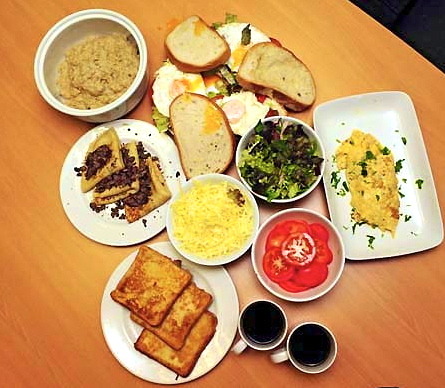Normally, people think of exercisers as those who work hard, train hard, and eat like there won't be food tomorrow. Take for example, the Michael Phelps breakfast of champions:
The NY Times Health Blog referenced a recent study from some University of Wyoming professors that demonstrates the opposite. Apparently, running would cause both men and women to reduce the calorie intake of their next meal by almost 100 more than someone who had just exercised by walking, and way more than someone who was totally sedentary. You can read the full study here. The study looked at some of the hormone and peptide production resulting after the two types of workouts. The result of running left the volunteers consuming fewer overall calories and making their calorie consumption much better regulated.
The article quotes Prof. Catia Martins as saying:
 | ||||||||||||||
| So that's what gold medal swimmers eat |
The article quotes Prof. Catia Martins as saying:
Exercise “improves the body’s ability to judge the amount of calories consumed and to adjust for that afterward”Now this doesn't mean that walking doesn't achieve the same goal, but it does shed light on how the body helps to regulate calorie consumption. This leaves us with an interesting theory of hunger dynamics: a body at rest tends to eat more than if that same body was up and moving. One way to help cure a case of the munchies is to get up and get moving.
Comments
Post a Comment